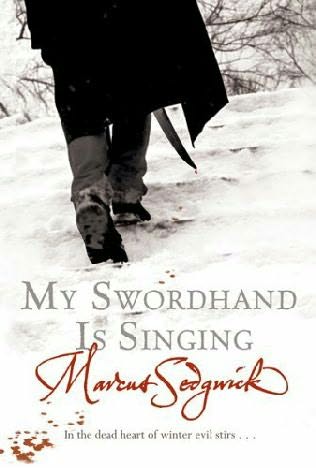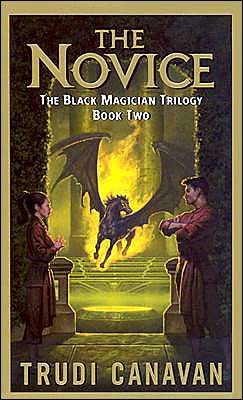The Running of a successful book-group within the Primary School.
Ever since I first became a teacher at Wantage CE Primary, back in 1999, I have been striving to get every child in my class to become as avid a reader as I am. I feel that it is the duty of every teacher to do this. Real reading can open up our eyes to the world we live in as well as appreciate the world within ourselves too. With this thought I set about making sure that I frequently read a wide and challenging range of books that would ensure healthy booktalk within the classroom. Over the years I attempted many different approaches to raising the standard of reading within the school, be it reading and sharing what I have read with the class; having a reading hour where parents come in and we read in small groups to children; handing out my recommended reading lists at parents’ evenings; to finally setting up a Reading Group.
The idea of starting a Reading Group occurred when I joined one myself several years ago. This group is hosted by Mary Sutcliffe, a former lecturer of mine from Westminster College (now Oxford Brookes). I found the meetings rewarding and insightful on many levels and was reading books that would have slipped my notice. Debate about whether a novel was good or bad was always healthy as was discussion of characterisation and theme. The fact that coffee and cake were added into the mix always helped too!
When I began teaching Year 6 in September 2007, I decided that I enjoyed my Reading Group so much that installing one within the school would be a good idea. My first approach, and in fact the one I stuck with, was to open it up to Year 5 and 6. Prior to the decision, I had flitted with the idea of doing one in Year 3 & 4 also. However, my wife rightly decided that one club was enough for the time being.
Marcus Sedgwick’s ‘My Swordhand is Singing’ was to be our first book. The choice itself was based on the year’s nominees for the Carnegie Medal. I had read plenty of Sedgwick before and thought that this was a novel (and author) that none of the children had read before. As the weeks prior to the first meeting passed I had the great joy of watching several of my pupils read the book during quiet reading and neighbours asking what the book was about and that the cover looked ‘cool’. Also, in the letter reminding the pupils of when the meeting was, I stated that they could bring a snack or two (mainly chocolate based) if they wanted. This, of course, went down a storm!
At the first meeting we were all nervous. The club took place in the school’s infant library. In the middle of the huddle was a small mountain of chocolate and lemonade. All the pupils sat anxiously with their copy of the book as well as another recommended book (which they had been asked to bring along). After the disastrous first fifteen minutes, where I allowed them to eat and chat about the book, we managed to get a good discussion going. The reviews were mixed, which was excellent as it started a self-running debate about the novel itself as well as the characters and their actions. Those who were quiet were either pulled into the conversation by me or a peer and we managed to get a great deal out of the discussion. The only problems were that the session was too short (1 hour) and we had to rush the recommendations.
News travelled fast. When the following book had been decided ( ‘Catcall’ by Linda Newbury ), the number of pupils who had signed up for the club had doubled. We now had 26 pupils attending and one Teaching Assistant who had asked if she could come along to the following meeting: to which I heartily agreed. This time I was better prepared. Having read the book earlier on, I decided to get in contact with Linda Newbury and tell her that ‘Catcall’ was being read in our group. She was an absolute saint and not only wrote an email back within moments, but also sent the group a stack of bookmarks and two books signed and made out to ‘Mr. Tobin’s Reading Group.’ Naturally, the children were enthralled about this and set about reading the book with great aplomb. It was nice to see not only purchased copies of Catcall in my classroom, but also editions loaned out from the local library (which I had advised parents to consider if they couldn’t get hold of a copy). To my pleasure, it turned out we had all the copies of ‘Catcall’ that the Oxfordshire Library owned.
The second meeting took place recently (we decided that one every six to seven weeks was more than enough). This time I only allowed the food and drink to be consumed when the main discussion was over and we were making our recommendations: this helped sort out the chaos at the beginning and allowed for real booktalk. As a group, we decided to devote our library display to the work of Linda Newbury with a focus of writing reviews on ‘Catcall’ (which was loved by all). I spoke a LOT less in this meeting, allowing the children to do the talking and debating. Rather touchingly, the Year 6s were aware that they would only be here for around another two meetings and then would have to leave for secondary school. They asked if they could return next year for the meetings to which I agreed to give it some thought.
Overall, I feel that the book group has been a success on many different levels. On a personal front, I am running a club which I thoroughly enjoy being a part of. In fact, we have had to extend the club by an extra fifteen minutes as we weren’t getting through the content. It is also a joy to watch the enthusiasm emanate from these readers who are not only talking about the story, but also the style of writing adopted by the author as well as the credibility of the character’s actions and themes too. They are even making connections with other books that they have read in relation to the one we are reading and more importantly, reflecting upon how much they are learning about the world around them.
I think our Book Group is a great success and will continue to be so. Any teacher who enjoys reading and wants to share this enthusiasm with their school, should consider a similar approach. For me, the hardest part is sitting down and choosing the book. I have found a failsafe approach is to either go to
www.writeaway.org.uk and look through the reviews relevant to your age category or go to the book awards sites that are out there and see which titles are making a noise. I don’t know how the Book Group will adapt throughout the years but I definitely state that as long as it runs I will be doing my utmost to delivering stories and worlds that these children may have missed had they not had the opportunity or guidance.
‘Broken Glass’ by Sally Grindley is our next book.
 Author & Illustrator: Nick Abadzis
Author & Illustrator: Nick Abadzis








